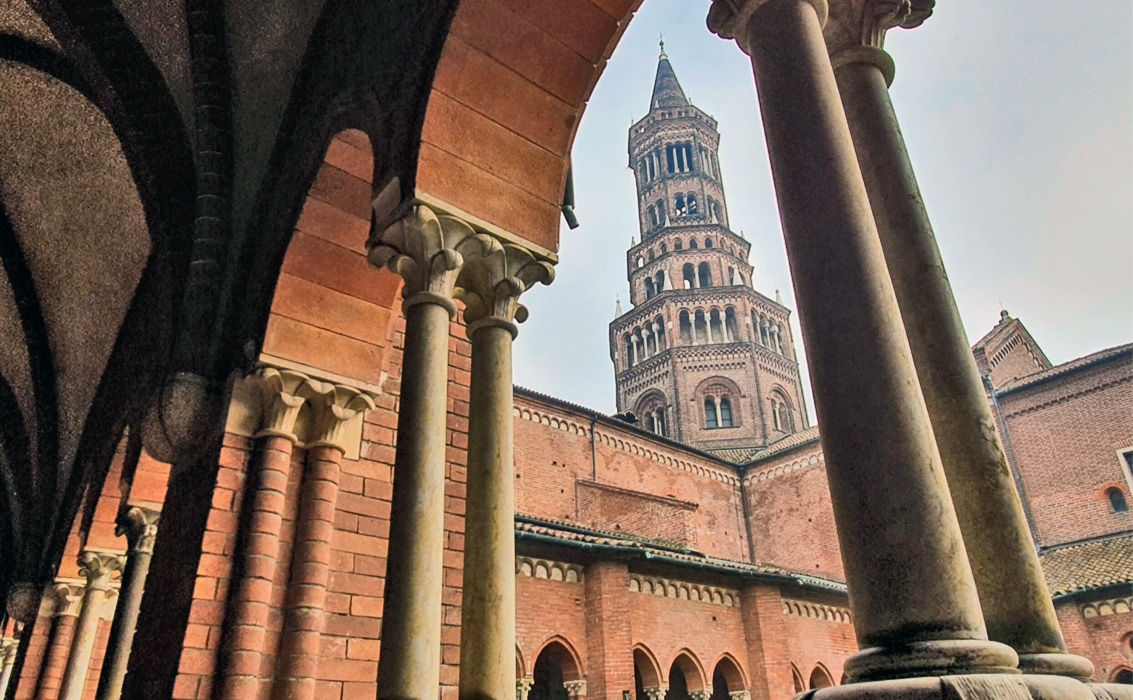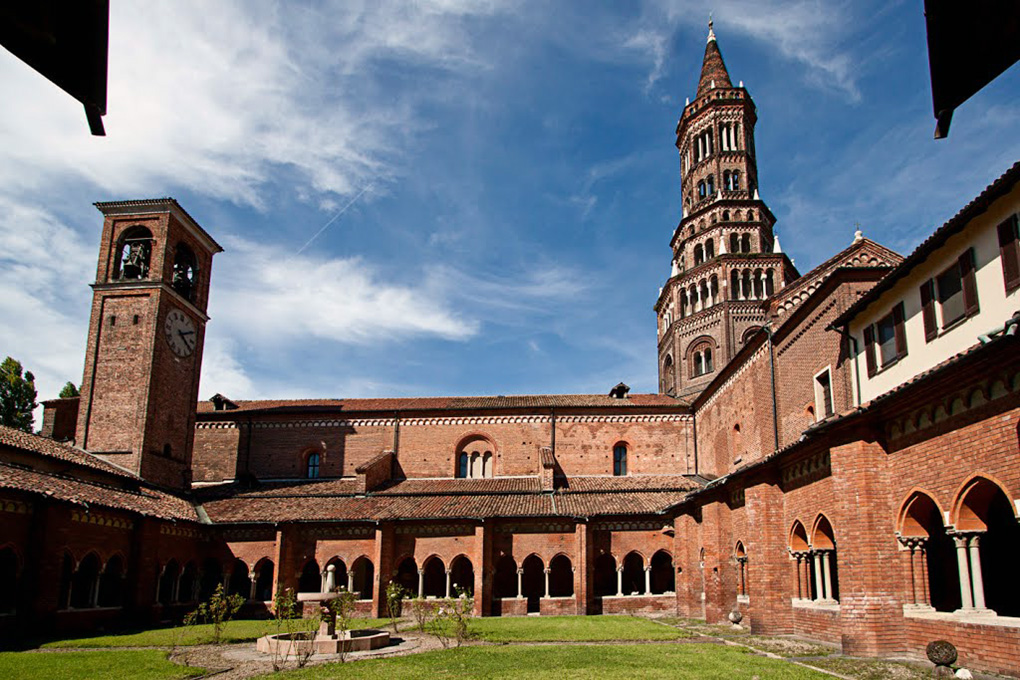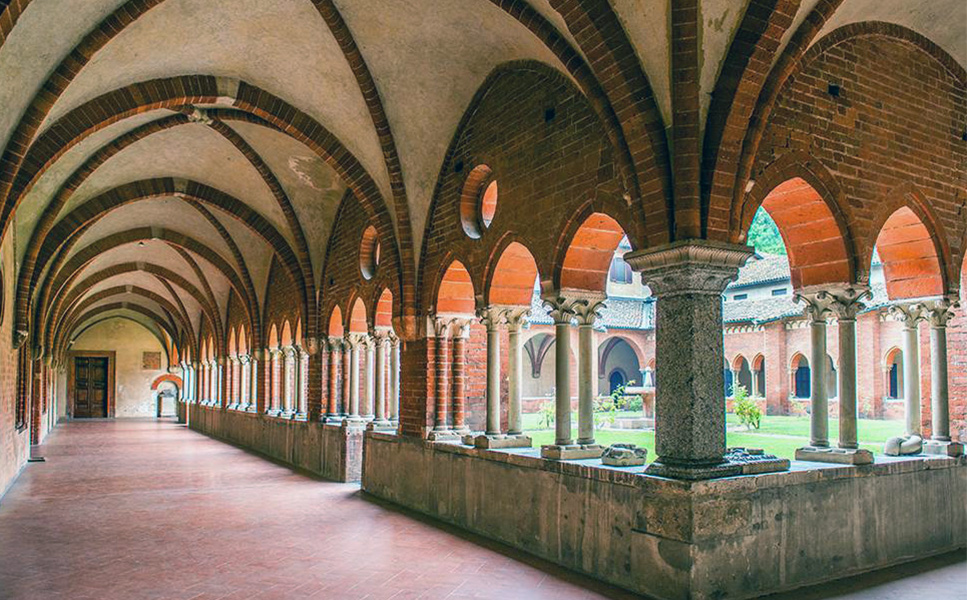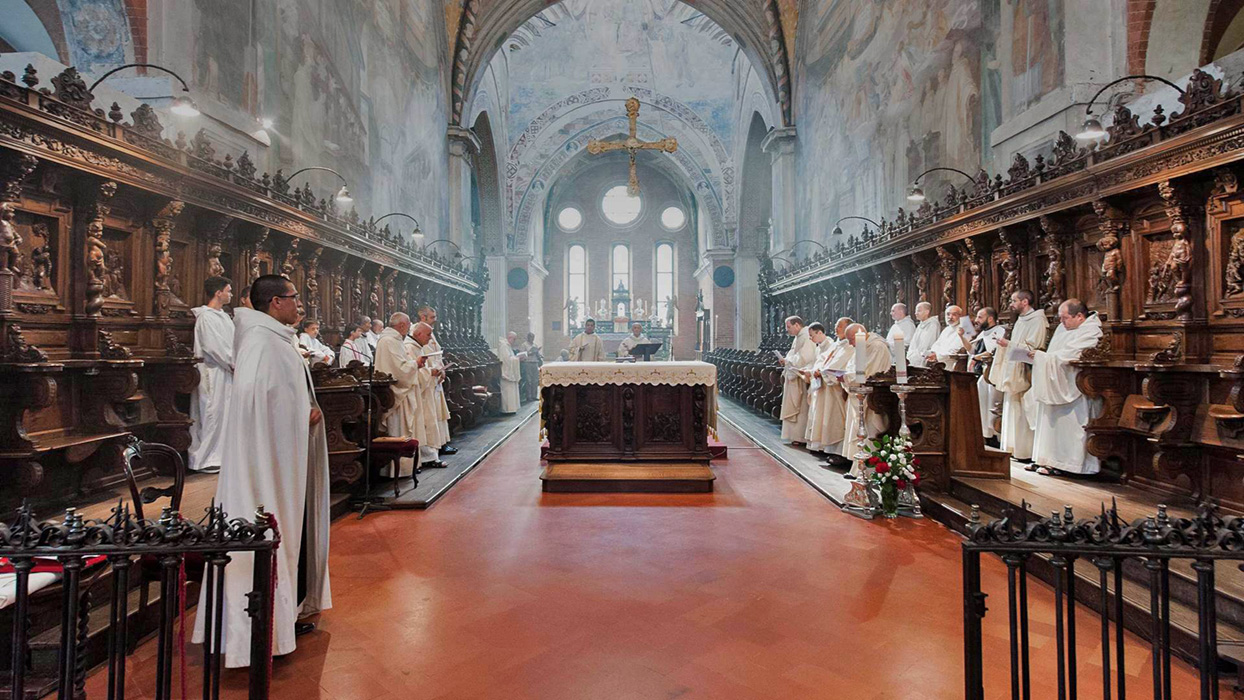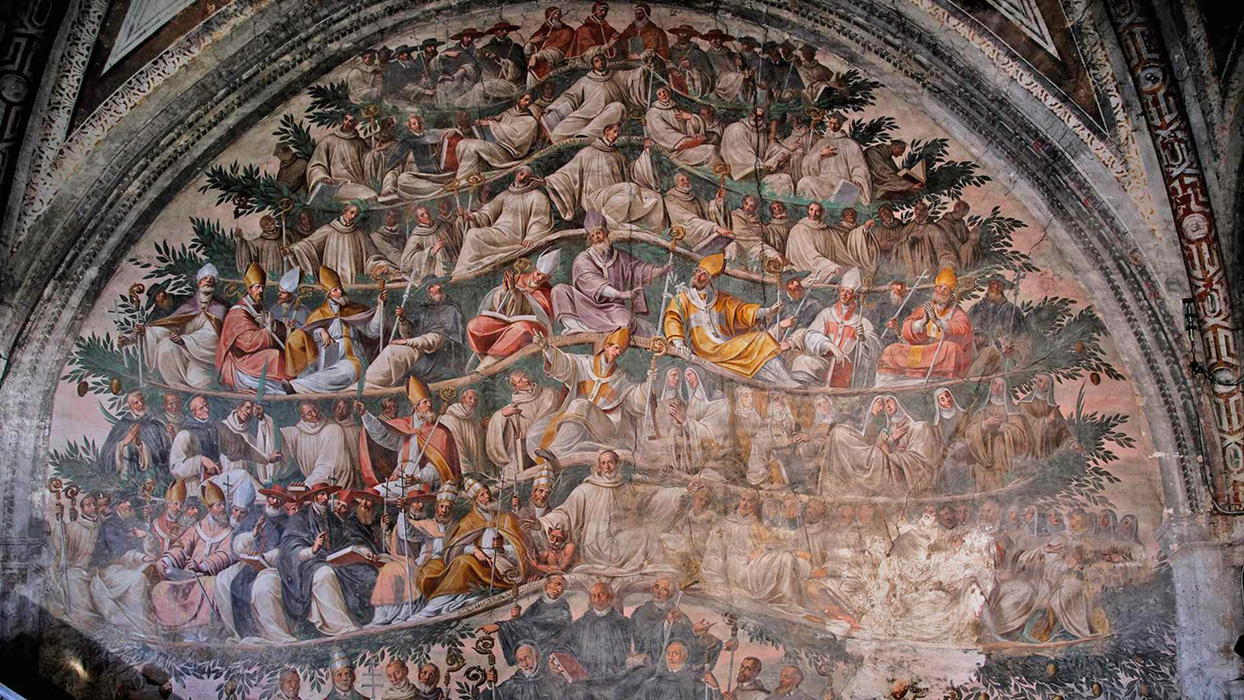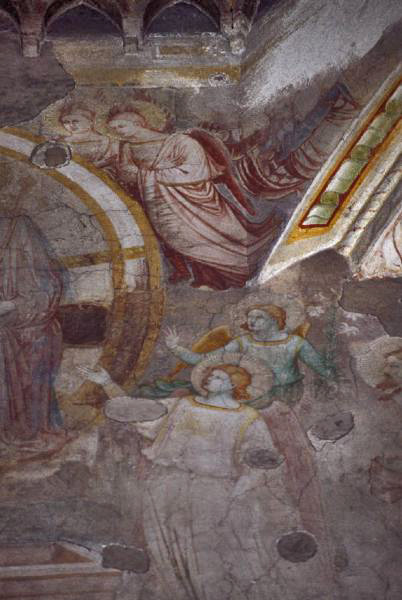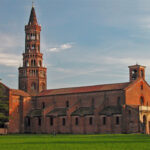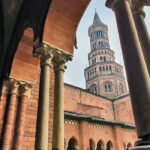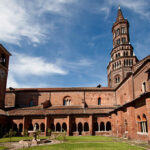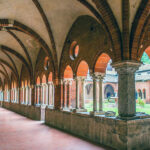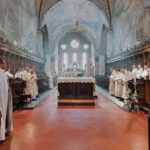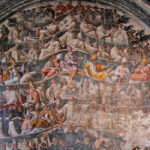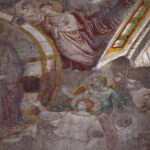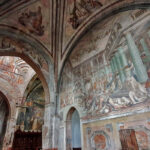Milan – The Abbey of Chiaravalle
The Abbey of Chiaravalle (in Latin, Sanctæ Mariæ Clarævallis Mediolanensis, also known as Santa Maria di Roveniano) is a Cistercian monastery complex located in the South Milan Agricultural Park, between the Vigentino and Rogoredo districts. Founded in the twelfth century by Saint Bernard of Clairvaux as a branch of the Abbey of Clairvaux, an agricultural village developed around it.
The church is one of the earliest examples of Gothic architecture in Italy, and thanks to the land reclamation and hydraulic works of the monks who inhabited it, it was fundamental for the economic development of the area surrounding Milan in the centuries following its foundation.
On October 10th, 1134, the first Cistercian monks from the town of Moiremont, near Dijon, arrived in Lombardy and settled in Coronate near Pieve di Abbiategrasso, founding the Abbey of Morimondo. Another group of Cistercians, this time from Clairvaux, arrived in Milan at the beginning of 1135, guests of the Benedictines of Sant’Ambrogio, in support of Pope Innocent II in the dispute against the antipope Anacletus II, which was also antagonizing the rest of Lombardy against the city of Milan.
Bernard of Clairvaux, who had arrived in the city of Milan, convinced the Milanese to support Pope Innocent II, putting an end to the papal dispute and the long war that had pitted Milan against the rest of Lombardy. In gratitude to the saint, the Milanese authorities committed to building a large monastery, which was then carried out by Bernard, who positioned the complex five kilometers from Porta Romana in a marshy area, later reclaimed by the monks, to the south of the city called Roveniano or Rovegnano. He then left a group of brethren there with the aim of raising funds for the construction of the church. The first buildings constructed by the religious were temporary, and only between 1150 and 1160 was the construction of the current church begun, which then extended for about seventy years, until 1221; no trace remains today of the original structure from 1135.
According to tradition, the Grana Padano cheese of the Po Valley was born in 1135 in the Abbey of Chiaravalle; however, the identification of this abbey as the birthplace of the ancestor of Grana Padano is not certain, as another homonymous abbey was present in the Po Valley between Piacenza and Fidenza.
On May 2nd, 1221, the Bishop of Milan, Enrico I da Settala, consecrated the church to Saint Mary; in the northeast corner of the cloister, one can find, written in semi-Gothic characters, the plaque placed on that occasion.
During the thirteenth century, work continued with the construction of the first cloister, located south of the church. Later, in the fourteenth century, the refectory (a hall of five naves characterized by cross vaults) and the lantern were built. In 1412, a small chapel was built at the request of the abbot, positioned in correspondence with the southern transept, remodeled in the seventeenth century and now used as a sacristy.
In 1442, the abbey was turned into Commendam, entrusted to Abbot Gerardo Landriani, and passed in 1465 under the leadership of Ascanio Maria Sforza Visconti, brother of Ludovico il Moro. In 1490, Bramante and Giovanni Antonio Amadeo, commissioned by Cardinal Ascanio Maria Sforza Visconti, began construction of the Great Cloister and the chapter house: during the Renaissance, many painters and artists worked at the abbey; this period also saw the works of Bernardino Luini. Later, from 1613 to 1616, the Fiammenghini were commissioned to decorate the internal walls of the church, which were literally covered with frescoes still visible today.
The history of the abbey continued normally over the centuries until the monks were expelled by the Cisalpine Republic in 1798, already threatened by Maria Theresa of Austria’s policy of suppressing monastic orders, to become a parish of the nearby town that same year. The assets of the abbey were sold, and demolition work on the monastery began: only the church, a part of the small cloister, the refectory, and the entrance buildings remained intact.
In 1861, to make way for the Milan-Pavia-Genoa railway line, the Bramante Great Cloister, despite being built on the only side adjacent to the abbey, as seen in historical prints, was destroyed.
It was only in 1893 that the Office for the Conservation of Monuments bought the abbey from private individuals who lived there and began the restoration of the complex, first entrusting it to Luca Beltrami, then in 1905 to Gaetano Moretti, who was responsible for the restoration of the tower nolare, in 1926 with the restoration of the original facade, removing the baroque superstructures, and in 1945 with further restorations and the relocation of the Wooden Choir in the central nave, which had been moved to the Certosa of Pavia for safety. Between 1970 and 1972, restoration work on the frescoes of the lantern was carried out, and since 2004, restoration work on the frescoes of the tower nolare and entrance buildings has been ongoing.
In 1952, thanks to the intervention of Cardinal Alfredo Ildefonso Schuster, the Cistercians returned to the abbey, regaining possession of the monastery on the condition that they would complete the restorations within nine years and then obtain the use of the abbey and the adjacent lands for the following twenty-nine years, renewable.


